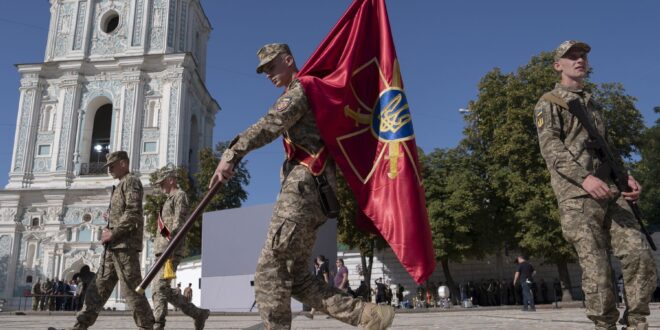Western criticisms of the grinding campaign are premature. They also play right into Vladimir Putin’s hands.
After a slow start, Ukraine’s summer counteroffensive is showing signs of a breakthrough. Its military has pierced Russian defenses in the south, putting it in reach of key targets in Russian-held territories. These gains come even as some Western officials warn the war is nearing a stalemate — and that further shipments of military aid are futile. If anything, the counteroffensive’s progress reinforces why the US and Europe should increase the pressure on Vladimir Putin and give Ukraine the help it needs to prevail.
It’s certainly true that the counteroffensive hasn’t succeeded as quickly as the West might’ve hoped. But the perception that it’s fallen short is due partly to inflated expectations. Last autumn, Ukraine’s forces retook more than half of the land seized by Russia during its February 2022 invasion, including the strategic city of Kherson. Since then, they’ve been buttressed by NATO training and Western weaponry, including tanks and long-range missiles.
Even so, hopes of a repeat of last year’s advances were always optimistic. Ukrainian forces have faced a tsunami of artillery fire as they try to move past some of the most heavily mined defenses seen since World War II. Russia’s military has used mass conscription to replenish its troops and absorb Ukraine’s assaults, albeit at great human cost. The surprisingly heavy resistance from entrenched Russian units has forced Ukraine’s military to adapt its tactics to preserve lives.
None of this means that US and European support has been in vain. Despite munitions shortages, limited air power and insufficient mine-clearing capabilities, Ukraine’s forces have imposed enormous attrition costs by hitting Russian logistics hubs and command centers. In recent weeks, the arrival of advanced hardware from the West, along with Ukraine’s better-trained and more motivated troops, appears to have produced “notable progress,” according to the US. While it comes too late for the summer push, the decision by the US and its NATO allies to send F-16 fighter jets to Kyiv by early next year could give Ukraine a decisive edge, allowing its forces to regain control of the skies and support combined military operations.
Even if battlefield positions become hardened, it matters where the lines are frozen. Should Ukraine advance far enough to hit Russia’s major resupply hubs to Crimea, it would be in a substantially better bargaining position if and when negotiations take place. But that would require a steady flow of support in the meantime. Regardless of what happens on the ground in the coming months, Ukraine will continue to need weapons for its defense, to recapitalize its forces and to protect against future aggression.
The alternative is grim. There is no serious constituency within Ukraine — despite suffering heavy daily losses — for giving up the fight to regain full control of its territory. Reducing US aid now, as some Republican lawmakers advocate, would hand Putin a reprieve at a time when Ukraine’s counteroffensive has momentum and Russia’s economy is faltering. Putin’s bet is that he can impose greater costs than his opponents are willing to take. The West still has to prove him wrong.
 Eurasia Press & News
Eurasia Press & News


